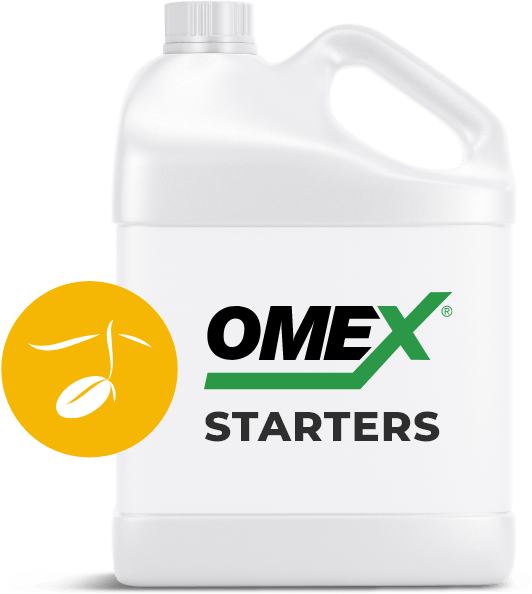
Perfuze

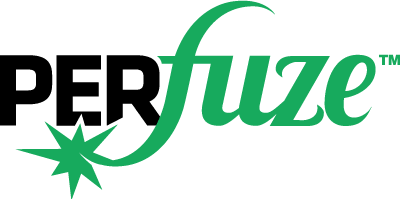
Better distribution of micronutrients in the field
ANALYSES: PERFUZE MG: 5-5-5 WITH 35% MG / PERFUZE B: 5-5-5 WITH 15% B
PERFUZE ZN: 5-5-5 WITH 50% ZN / PERFUZE CU: 5-5-5 WITH 50% CU
PERFUZE BZN: 5-5-5 WITH 12.5% B + 22% ZN / PERFUZE MN: 5-5-5 WITH 25% MN
PERFUZE ZNBMN: 5-5-5 WITH 25% ZN + 10% B + 16% MN / PERFUZE FE: 5-5-5 WITH 20% FE
What is It?
- Highly concentrated liquid suspension intended for coating dry PKS blends with micronutrients.
- It can also be applied on other porous materials placed in the seed row (i.e., gypsum).
- Formulated with Micronutrient Delivery System (MDS Technology™).
- Various analyses offered.
- Perfuze is easy to use.
- Faster drying time.
- Treatment possible at low temperatures (-25°C).
- Perfuze is recommended for use in rotatory vertical or horizontal drum blenders, screw auger or conveyor blenders, rubon blender or other volumetric blending systems.
- Most cost-effective and efficient way of applying micronutrients to the soil.
- The product is available in 5L jugs, 450L and 1000L IBC’s.
When & Why Use It?
- Used to correct micronutrient deficiencies and address micronutrients crop demand based on a soil test and crop removal.
- When soil-applied micronutrients are required.
- Allows for a better distribution of micronutrients in the field.
- In high pH soils, soils with high organic matter, heavy manured land, sandy and light textured soils and other situations restricting micronutrients availability.
What to Expect?
- Even coverage of the fertilizer granules.
- As a liquid product, Perfuze helps reduce dust during blending.
- Better access of the roots to essential micronutrients.
- Correction of the expected micronutrients deficiencies.
- Healthier crops with a preserved yield and quality.
Size Options

Tote

5L
Application Guidelines
- Application rates of Perfuze vary depending on the crop, soil deficiency, crop removal and the NPKS blend broadcasting or banding application rate. The typical usage rate ranges from 0.5L to 5L per metric ton of blend.
- A calculator is provided to determine the optimal application rate.
- The addition of diatomaceous earth is recommended for blends with a high percentage of urea to accelerate drying or improve storage conditions in the bin.
Findings
2018 – Heavy clay – Manitoba
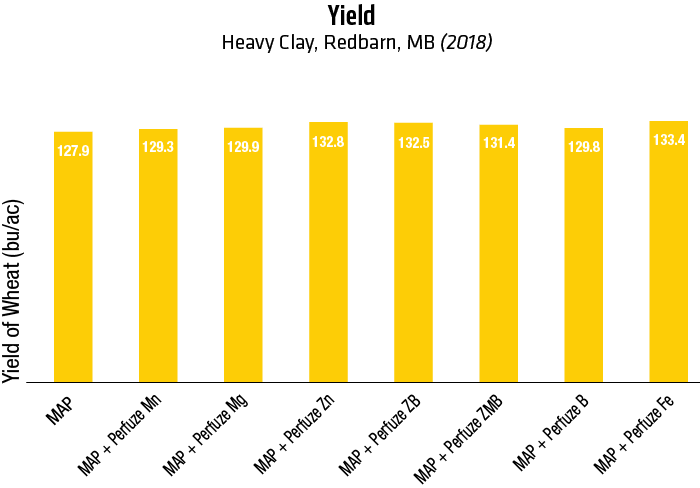
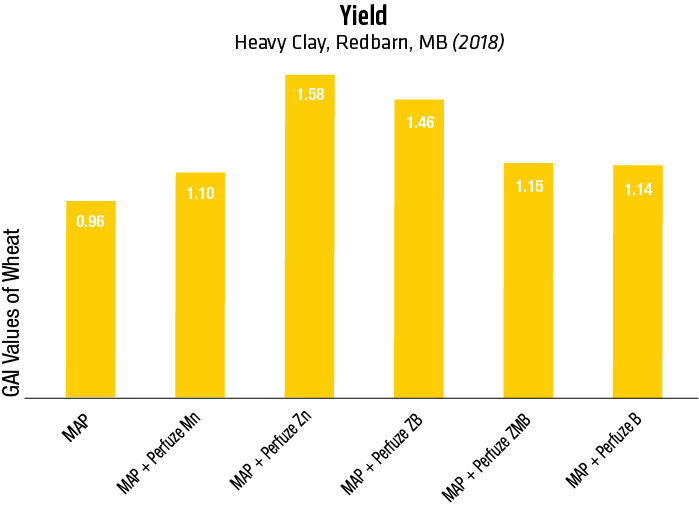
2017
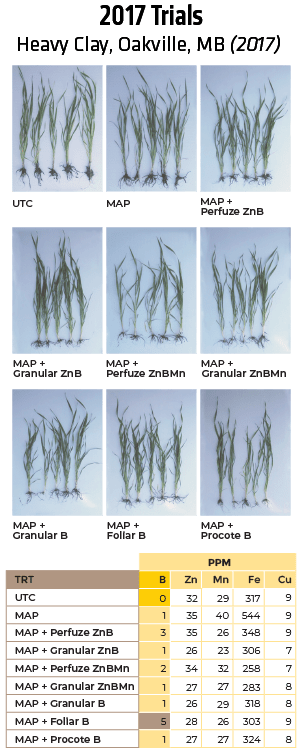
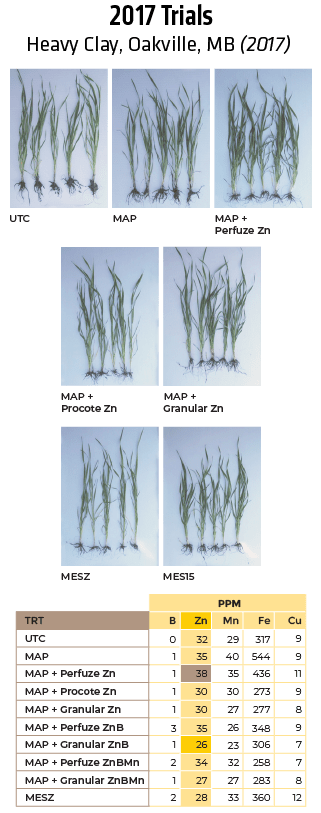
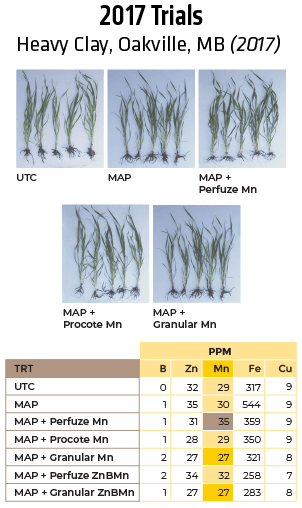
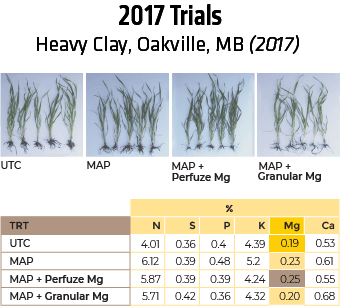
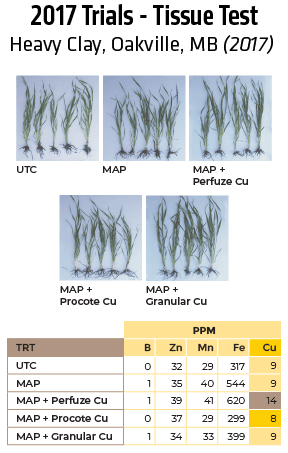
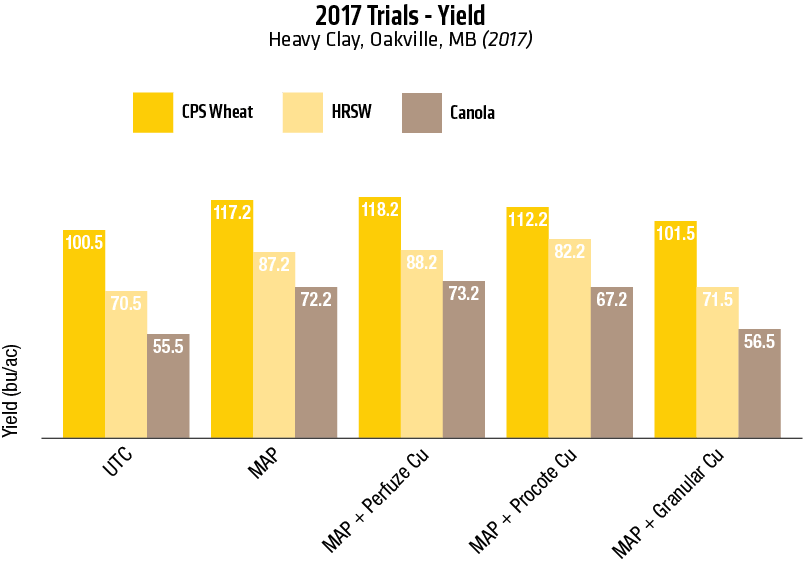
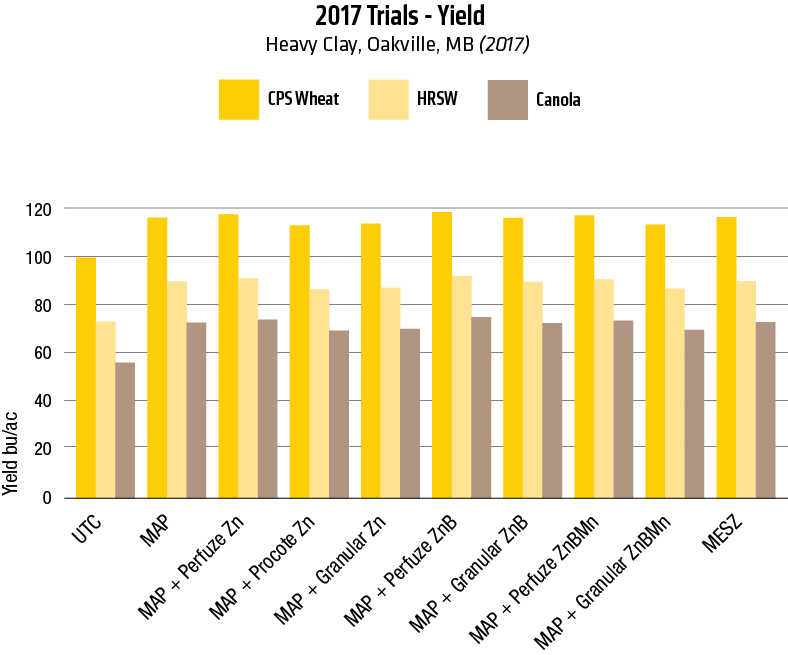
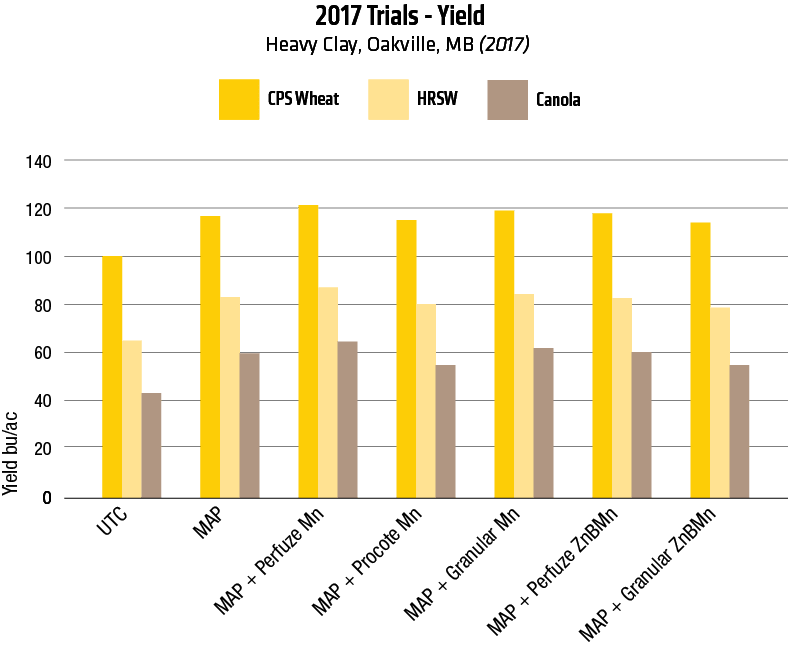
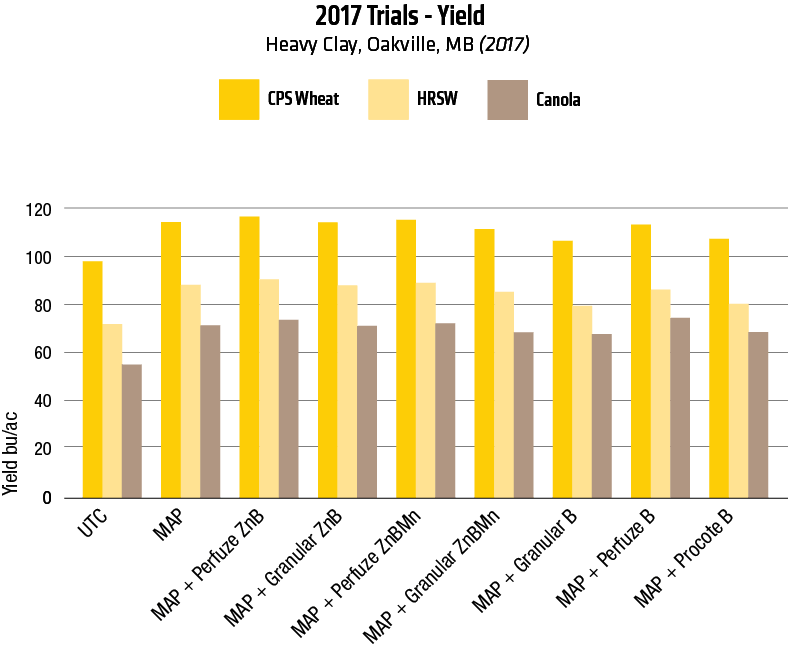
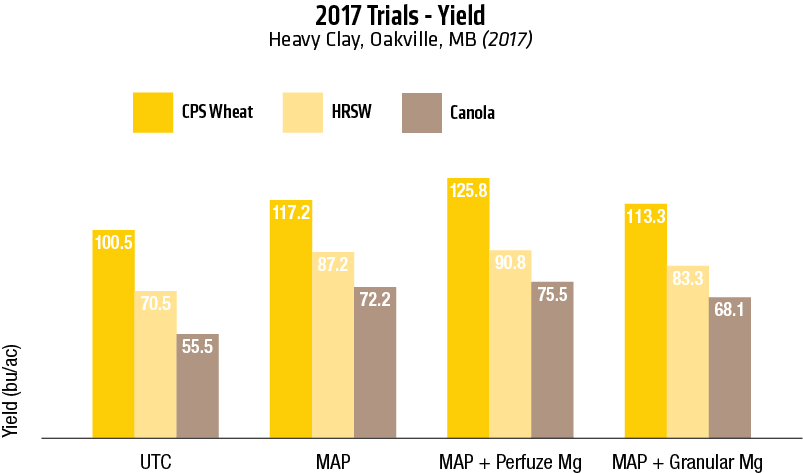
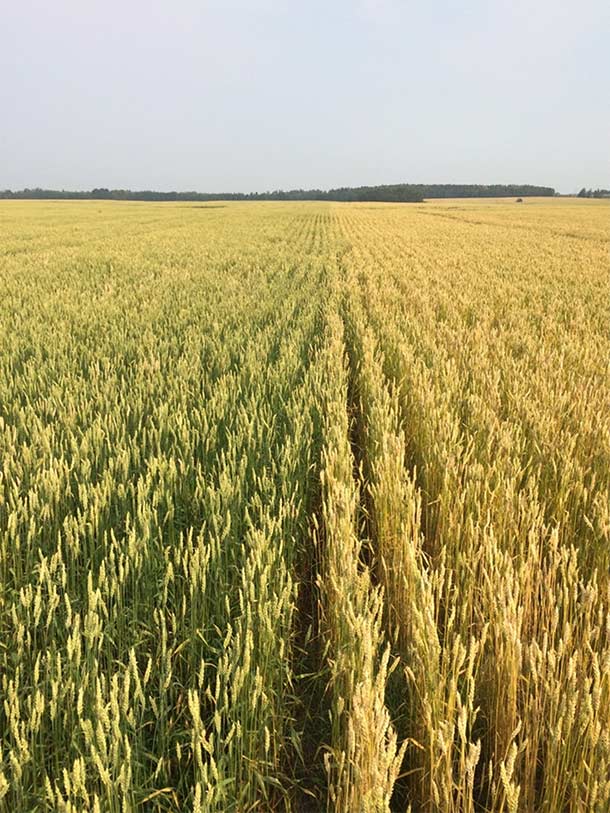
- Volumetric
- + 5 bu/ac
- 1 week maturity difference
- No Ergot
2016 – Heavy clay – Manitoba
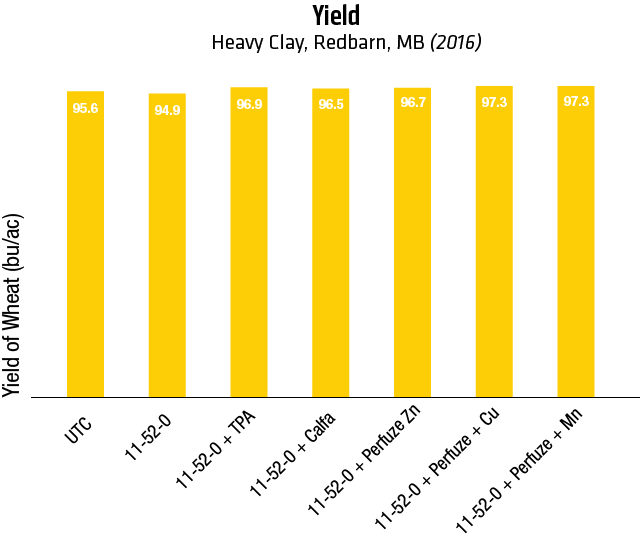
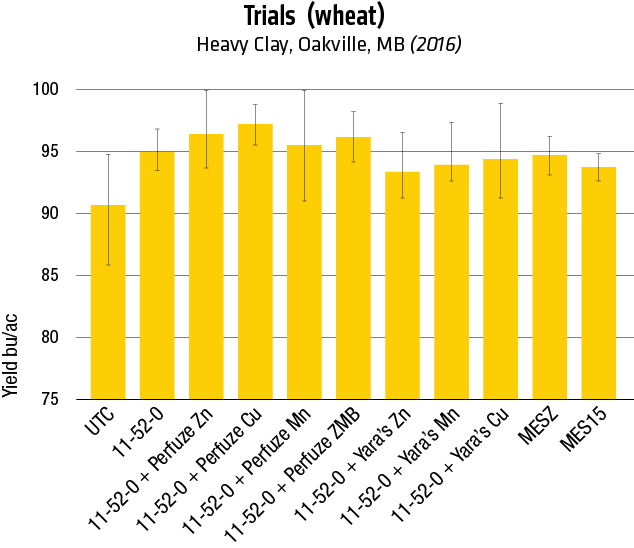
2015
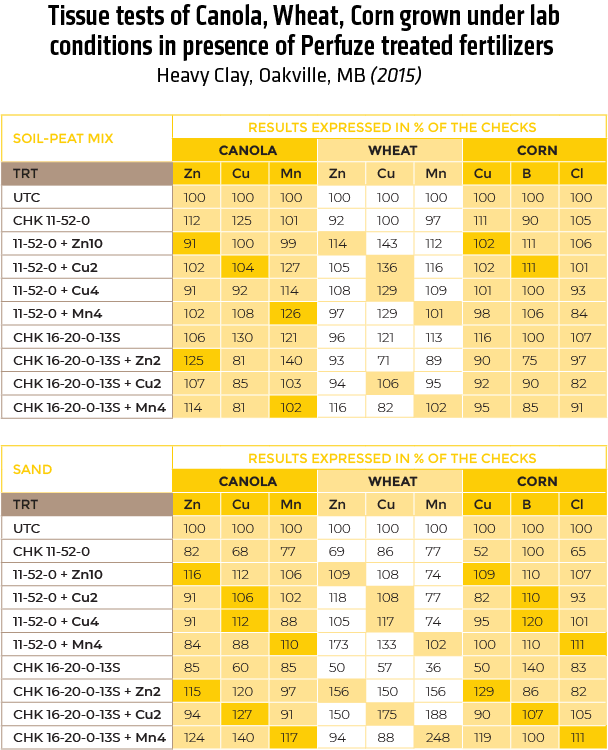
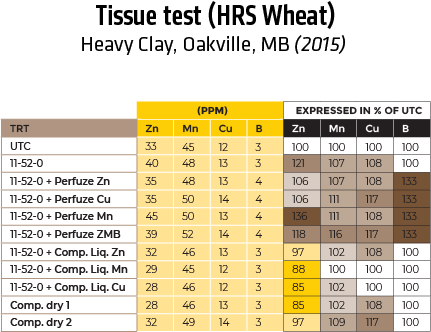
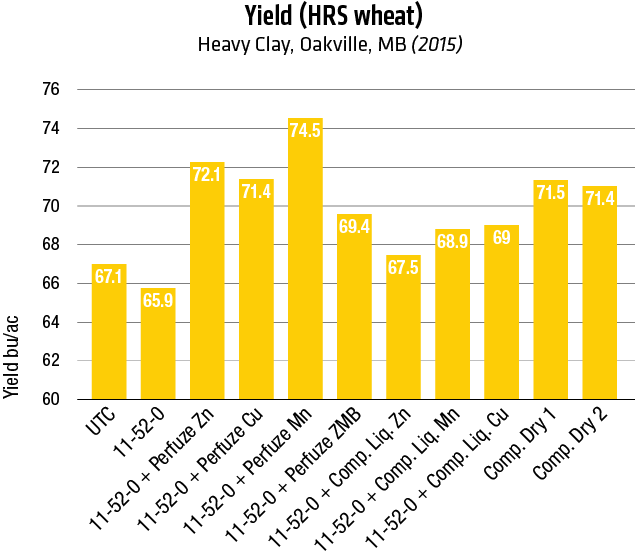
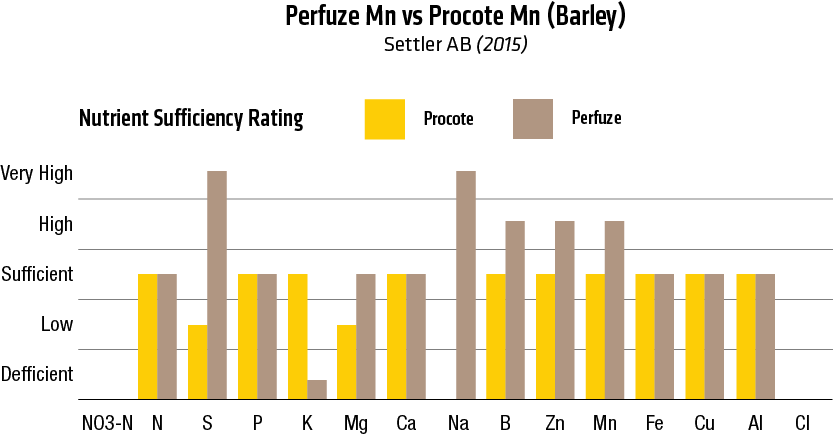
Procote
- These plants are deficient in POTASSIUM. Possible causes include low soil potassium, poor soil drainage, droughty soil conditions or compaction.
- These plants are low in MAGNESIUM. This condition may be due to low soil magnesium, excess of potassium, low soil PH or poor drainage. A&L recommends a foliar application at this time follow manufacturer specifications.
- These plants are low in SULFUR. This could possibly be a result of low soil sulfur, poor root development or inadequate drainage.
- A&L recommends a foliar application when Mg, B, P Zn or Mn are low or defficient at this plant stage. Follow the recommended product label rates.
- A&L recommends a followup tissue sample 14 days after foliar treatment, to monitor progress.
Perfuze™
- These plants are deficient in POTASSIUM. Possible causes include low soil potassium, poor soil drainage, droughty soil conditions or compaction.
- The very high level of Sulfur in the second sample may be from contamination with a spray or dust.
- A&L recommends a foliar application when Mg, B, P Zn or Mn are low or defficient at this plant stage. Follow the recommended product label rates.
- A&L recommends a followup tissue sample 14 days after foliar treatment, to monitor progress

- condition may be due to low soil magnesium, excess of potassium, low soil PH or poor drainage. A&L recommends a foliar application at this time follow manufacturer specifications.
- A&L recommends a foliar application when Mg, B, P Zn or Mn are low or defficient at this plant stage. Follow the recommended product label rates.
- A&L recommends a followup tissue sample 14 days after foliar treatment, to monitor progress.

